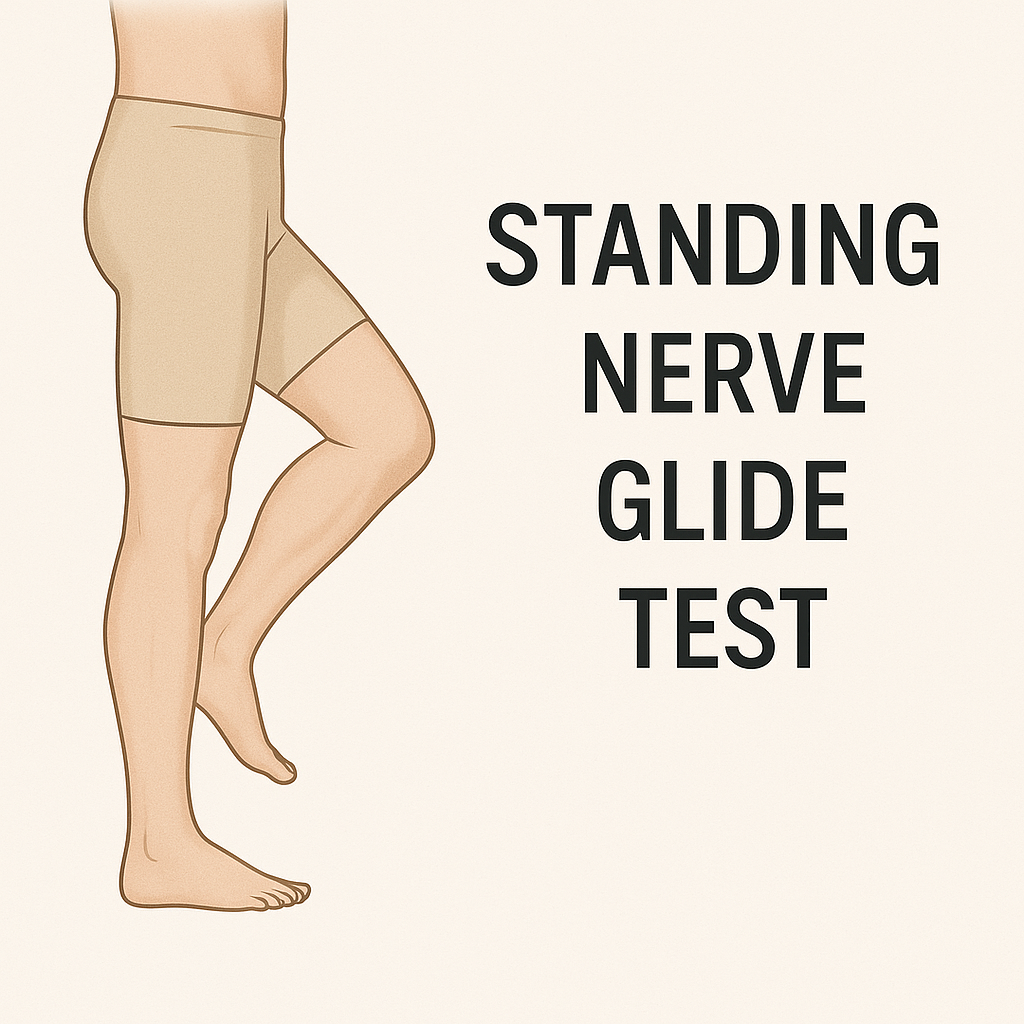October 3, 2025
What the Standing Nerve Glide Test Can Reveal About Back Pain
Do you ever feel a sharp, burning, or tingling pain running down your leg? It may come and go, or it may flare up after standing, walking, or sitting too long. You might brush it off as normal. But what if your body is trying to tell you something important?
At American Back Centers in Pittsburgh, we see this symptom every day. It often signals something deeper than muscle tension or fatigue. In many cases, radiating leg pain is a sign that a nerve is being compressed, often by a spinal disc problem.
The good news is that there are simple ways to assess whether your nerve pain is worth looking into further. One of those tools is called the standing nerve glide test.
This article will walk you through what this test is, what it reveals, and what steps you can take if the results raise concerns. Our goal is to help you understand your pain and take steps toward lasting, drug-free relief.
What Is the Standing Nerve Glide Test?
The standing nerve glide test is a simple, movement-based assessment that can help determine whether a nerve root in your spine may be compromised. It is not a medical diagnosis, but it can offer helpful information about what might be contributing to symptoms like:
- Numbness or tingling in the leg or foot
- Burning or electric-like pain that runs down the back of your thigh
- Increased discomfort with sitting, bending, or standing
- Sudden weakness or unsteadiness in one leg
This test is commonly used by clinicians to assess nerve mobility. When done correctly, it can give clues as to whether a nerve is being irritated or compressed.
How to Perform the Standing Nerve Glide Test
You can try this at home, but always consult a professional if your symptoms are severe or worsening. Here is how to do the test:
- Stand upright with good posture. Make sure you are near a wall or chair for balance.
- Lift one foot a few inches off the ground.
- Straighten your knee as much as you comfortably can.
- Flex your foot upward toward your shin.
- Hold this position for a few seconds, then relax.
- Repeat the movement 10 times. Then switch legs if needed.
While doing this, pay close attention to how your leg feels. If you feel tension, a pulling sensation, or even mild relief, those are signs that the nerve is being mobilized through the movement.
If you feel a sharp increase in pain, stop and make note of it. This may be an indication of deeper nerve irritation or compression.
What Does This Test Reveal?
This movement is often referred to as "nerve flossing" or "nerve gliding." You are gently encouraging the nerve to move freely within its pathway. If the nerve is being compressed, inflamed, or irritated, the test may either reproduce or relieve some of your symptoms.
Even slight relief from this test can be significant. It may suggest that your sciatic nerve or another nerve in the lumbar region is not gliding properly due to compression at the spinal level.
This is frequently caused by a disc issue, such as:
- Bulging disc
- Herniated disc
- Degenerative disc disease
- Spinal stenosis
When a disc presses against a nerve root, it can cause pain that radiates down the leg. This is known as radiculopathy or sciatica.
Why You Should Not Ignore These Symptoms
It is easy to dismiss leg pain as a muscle cramp or overuse. But if it becomes a recurring issue, or if it is accompanied by numbness or weakness, it may point to a structural problem that needs attention.
Left unaddressed, nerve compression can lead to worsening pain, reduced mobility, and even long-term nerve damage.
Many patients wait until the pain becomes severe or until they are told that surgery is their only option. That is not always necessary. In many cases, natural and non-invasive treatments can help relieve the pressure on the nerve and support healing.
How American Back Centers Approaches Nerve Pain
At American Back Centers, we specialize in treating spinal conditions through a non-surgical and drug-free approach. Our methods are focused on correcting the root cause of the issue, not just masking the symptoms.
One of our primary tools is VAX-D therapy, a form of spinal decompression that gently reduces pressure on the spinal discs and nerves. This therapy has helped many of our patients avoid surgery and return to the activities they love.
Other treatment options may include:
- Non-surgical decompression therapy
- Postural and biomechanical analysis
- Gentle spinal alignment techniques
- Functional movement rehabilitation
- Targeted nerve mobilization
- Personalized wellness plans
Our team works closely with each patient to understand their condition and tailor a plan that fits their lifestyle and goals.
A Real Patient Story
We recently worked with a patient who had experienced radiating leg pain for over a year. He had tried medications, physical therapy, and even considered surgery. After performing the standing nerve glide test in our clinic, we identified a likely disc-related issue.
After a full evaluation, we began a customized care plan including VAX-D therapy and movement-based rehabilitation. Within weeks, his pain had decreased significantly. He could sit, walk, and sleep without that constant nerve pain.
Stories like this are common in our office. The key is early intervention and the right approach.
Do You Need to Be Concerned?
If you tried the standing nerve glide test and noticed a strong response, it is worth having a professional evaluation. Even if you only feel mild symptoms now, they could progress over time if the underlying issue is not addressed.
It is important to remember that not all back and leg pain is the same. A thorough assessment can help determine whether your pain is coming from a disc, a joint, or even postural imbalance.
The sooner you address it, the more options you have for natural healing.
Who This Test May Help
The standing nerve glide test may be especially helpful for individuals who:
- Sit at a desk for long periods
- Stand or walk for extended shifts
- Have a history of low back pain
- Have recently experienced a flare-up of sciatica
- Want to explore non-surgical options for relief
It is a simple way to start listening to your body. If your nerve feels "stuck," irritated, or inflamed, it may be time to take the next step.
Why Choose a Non-Surgical Approach First
Surgery should never be the first option unless there is an emergency. Many people are told they have no choice but to operate, yet their condition may be responsive to conservative care.
Non-surgical spinal decompression offers an alternative for those with disc-related pain. It works by relieving pressure on the affected nerve, promoting circulation, and supporting the healing of the disc tissue.
At American Back Centers, we have helped many patients avoid back surgery altogether. Our goal is always to help the body heal naturally whenever possible.
Take the Next Step
If you are experiencing leg pain, numbness, or tingling, do not wait for it to become unbearable.
The standing nerve glide test is a great starting point, but it is not a substitute for a full evaluation.
Our team is here to help you get answers and find real solutions. We invite you to schedule a free consultation with American Back Centers. It takes less than five minutes to get started, and there is no obligation. Just a conversation with a team that listens and cares.
Let us help you move forward without surgery, drugs, or frustration.
Schedule your free consultation today:
https://americanbackcenters.com/contact/









